
SEO PowerSuite
SEO PowerSuite has helped 500,000 webmasters improve their sites' rankings, so it will help improve yours. Get your free copy of SEO PowerSuite now!
I get that. I’ve helped to found two analytics companies. Sometimes, though, it’s necessary to get the quick-and-dirty on things — the barebones numbers that provide the core information source on a website.
Those are the numbers that I want to explain in this article. When you’re finished reading this article, you’ll know the eight data points that will give you an accurate read on your website. Then, you can take action based on what you know.
What you’re about to discover will enhance your ability as an SEO, a marketer, and a digital expert.
Domain Authority
The Domain Authority of a website is a number developed by Moz that functions as a comparative metric for how important and powerful your website is.Here’s how Moz defines it:
Domain Authority is Moz’s calculated metric for how well a given domain is likely to rank in Google’s search results. It is based off data from the Mozscape web index and includes link counts, MozRank, and MozTrust scores, and dozens of other factors. It uses a machine learning model to predictively find an algorithm that best correlates with rankings across thousands of search results that we predict against.Domain Authority is measured on a 100-point scale. If your site is in the 20s, it’s not so hot. If your site is in the 90s, you’re doing really well.
Why It Matters
The Domain Authority metric has proved to be one of the most reliable numbers for determining the success of a website in the SERPs. A higher DA invariably translates into bigger traffic and better search ranking.I’ve developed a chart to help you understand your DA. Find out your domain authority (“Where to Find It” below), and then find out how you’re doing.
Thankfully, you can improve your Domain Authority through careful and persistent work.
Where to Find It
Domain Authority is publicly available for any website. You can use the following free sources- http://www.opensiteexplorer.org/ (limit: three daily without paid subscription)
- http://www.bulkdachecker.com/ – (provides the DAs for as many as 200 URLs at a time)
Site Speed (Load Time)
A website’s speed is basically how fast it appears in a user’s browser.Technically, site speed is dependent upon load time. Load time calculates the latency from the point at which a user submits a request. The network server time and browser time are both factored into the equation, along with the page size (measured in bytes), and requests.
Though there are a variety of technical factors to load time, the most important issue to take notice of is the number of seconds/milliseconds it takes for your page to appear.
Why It Matters
Site speed is crucial for two related reasons — 1) SEO and 2) user experience. From an SEO standpoint, it’s apparent that Google devalues sites with long load times. This may be tied to the user experience issue. Pages that take a long time to load have higher bounce rates and lower levels of engagement.You know this experientially. If a page takes a long time to load, you probably become impatient. You may click off to a new tab to pass the time while the slow-loading page comes into view. Or, you may just forget about it altogether.
Where to Find It
There are a variety of helpful places you can get site speed metrics. Here are the top three free places:Quicksprout – (full disclosure, this my company) My analysis tool gives you both a basic speed score, and a full report. The “speed score” is a handy number for determining how you rank, along with load time (in seconds), page size, and requests.

A more advanced report (also free) provides a full graphical readout of speed metrics based on content analysis, page type/file/size/load time, scoring performance, along with a series of recommendations.
PageSpeed Insights – Google Developer Tool
Google’s pagespeed tool is another handy and freely available source of speed insights.
Their analysis provides desktop and mobile displays for your site, along with scores, images, and recommendations.
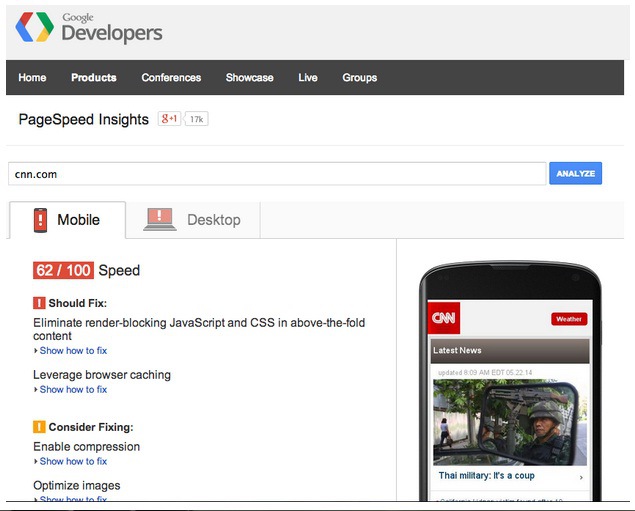
The screenshot below is a negative trend, reflecting deindexing of a huge percentage of indexed sites, coinciding with a site launch.

The Big Four social sites are the most important:
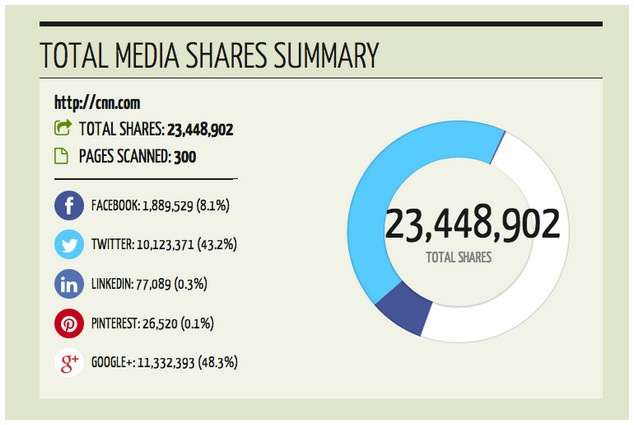
Google defines sessions as “a group of interactions that take place on your website within a given time frame. For example, a single session can contain multiple pageviews, events, social interactions, custom variables, and e-commerce transactions.” A session, then, can include several visits, or may count as two visits, if a single visitor takes, say, an hour break in between visits.
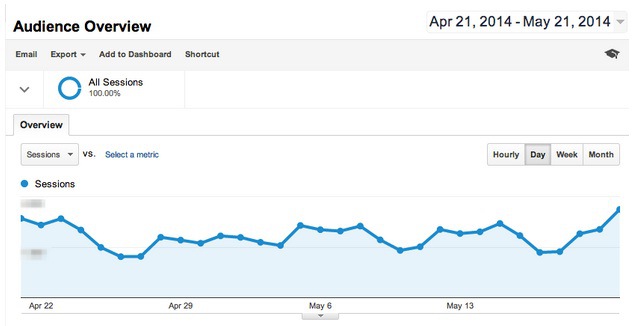
This is the goal of search marketing — creating a website and web content that people will find organically. The more organic visitors, the better you’re doing with your content and content marketing.
In Google Analytics, navigate to Acquisition → Keywords → Organic. Though many of the results are “not provided,” you can still gain a helpful understanding of how users are accessing your site.
The best way to view this data is in a pie graph form in order to determine how your organic visits compare with direct traffic, referral traffic, and other traffic forms.

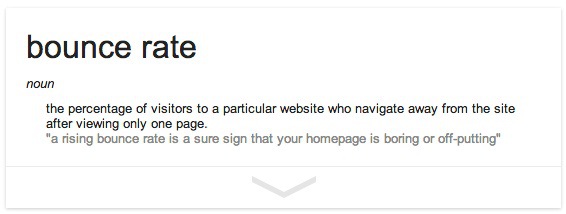
The search engine takes this behavior into consideration, and uses it as a factor in ranking your site — one of two user metrics used by Google for SEO ranking. If a lot of users are bouncing, then the search engine will devalue your site. It’s just that simple.
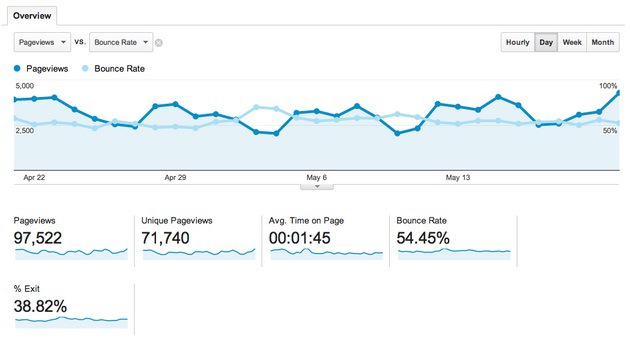
What is the most helpful SEO data that you use?
Image Credits
Featured Image: StevanZZ via ShutterstockScreenshots: Taken June 2014

Social Media Interaction
Social media counts tell you the number of people who are sharing, liking, or otherwise interacting with your social media presence.Why It Matters
Social media is important, because it reflects how your site is doing socially. Social is its own form of search, and the level of social virality that your site produces is a huge indicator of its SEO success.Where to Find It
In order to have social media metrics, you must first have a presence on social sites. It’s as easy as checking the number of followers.The Big Four social sites are the most important:
- Facebook Likes
- Google+ Follows
- LinkedIn Followers
- Twitter Followers

Site Sessions
A website “session” is basically a user interacting with your site. A “session,” however is not just a “visit.” Although the number of visitors to your site is important, the number of “sessions” provides a more nuanced and accurate perspective of how users are interacting with your site.Google defines sessions as “a group of interactions that take place on your website within a given time frame. For example, a single session can contain multiple pageviews, events, social interactions, custom variables, and e-commerce transactions.” A session, then, can include several visits, or may count as two visits, if a single visitor takes, say, an hour break in between visits.
Why It Matters
The total number of sessions within a given time frame is a helpful number for determining how many people are visiting your site. I recommend using this number as a corollary data consideration to your site traffic, because it incorporates a medley of subtextual data for a more intuitive read on user behavior.Where to Find It
Google Analytics, or any other tool that use the Google Analytics API, is the only source of session data for Google search traffic.
Organic Visits
Organic visits are the number of visitors referred by an unpaid search engine. “Organic” is usually contrasted with “paid,” which is traffic that comes from Adwords or other advertisements.Why It Matters
Organic visits matter a lot, because this is the number of users who are finding your site by typing queries into Google or other search engines.This is the goal of search marketing — creating a website and web content that people will find organically. The more organic visitors, the better you’re doing with your content and content marketing.
Where to Find It
You can examine organic traffic at a granular level using a variety of keyword tracking tools. However, Google Analytics provides a broad overview of this information.In Google Analytics, navigate to Acquisition → Keywords → Organic. Though many of the results are “not provided,” you can still gain a helpful understanding of how users are accessing your site.
The best way to view this data is in a pie graph form in order to determine how your organic visits compare with direct traffic, referral traffic, and other traffic forms.

Bounce Rate
Bounce rate is defined as “the percentage of visitors to a particular website who navigate away from the site after viewing only one page.”
Why It Matters
A site with a high bounce rate is a site that is performing poorly in the experience of users, and therefore in the judgment of the search engines. If people visit a single page on your site and do not go deeper, they are considered to have bounced.The search engine takes this behavior into consideration, and uses it as a factor in ranking your site — one of two user metrics used by Google for SEO ranking. If a lot of users are bouncing, then the search engine will devalue your site. It’s just that simple.
Where to Find It
You can access bounce rate data in Google Analytics.
Conclusion
The end goal of data is action. Determining the best action to take is predicated upon getting the best data. From the eight points above, you can learn a lot about your site, and take appropriate and decisive action to correct any shortcomings.- A loss of indexed pages can signal a site redesign error, an algorithmic penalty, or a manual penalty. Swift action to remediate toxic links or redirect 404s should be taken.
- A low number of social interaction indicates a loss of potential social traffic. Action should be taken to enhance social presence.
- A high bounce rate can indicate poor usability, incorrect keyword usage, or website with conversion optimization needs. Action is required.
- A long page load time will result in frustrated users and loss of ranking. Action should be taken to improve speed.
What is the most helpful SEO data that you use?
Image Credits
Featured Image: StevanZZ via ShutterstockScreenshots: Taken June 2014






No comments:
Post a Comment